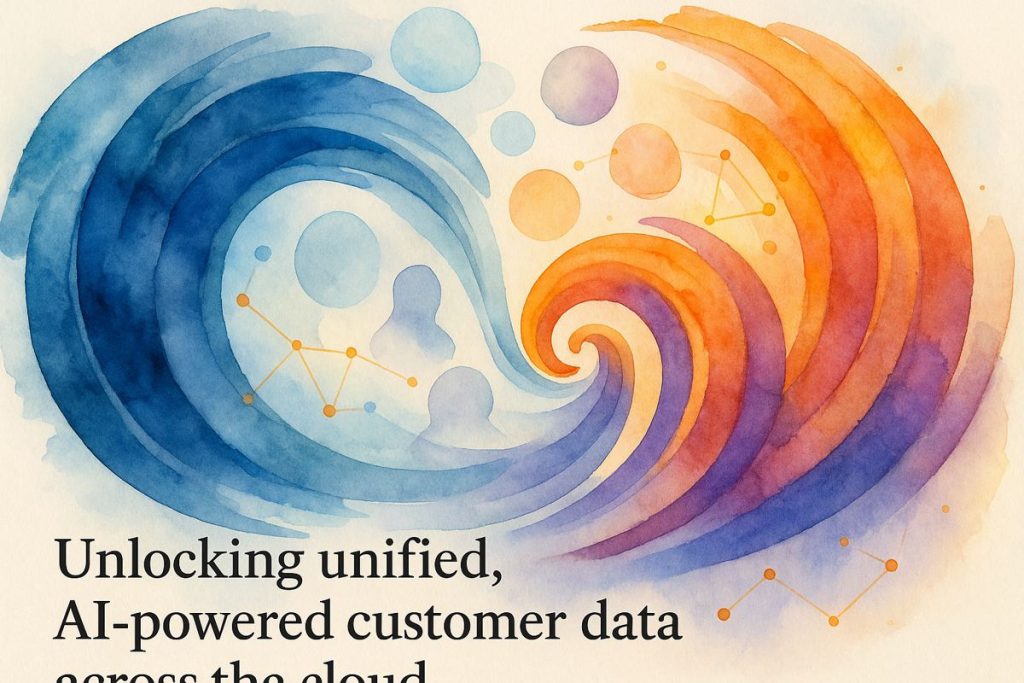The AWS and Salesforce partnership lets companies easily connect all their data, making customer info flow smoothly between different teams and tools. Now, data no longer sits in silos—everyone works from the same up-to-date profile, and analytics reports are way easier to pull together. Developers can build smarter apps without messy workarounds, using powerful AI and automation tools from both AWS and Salesforce. This teamwork also makes buying and managing software simpler for businesses. Most importantly, it keeps everything secure and ready for the future, so companies can focus on growing, not fixing broken systems.
What are the benefits of the AWS and Salesforce partnership for enterprise data and AI?
The AWS and Salesforce partnership breaks down data silos by enabling seamless, real-time integration between Salesforce Data Cloud and AWS services like S3 and Redshift. This empowers enterprises with unified customer profiles, streamlined workflows, advanced analytics, AI customization, and simplified procurement through AWS Marketplace—all with enhanced security and compliance.
The Grand Unraveling of Data Silos
Rain pattered against my office window, sounding—oddly enough—like the static hiss of an overloaded server rack. I sipped lukewarm coffee, squinted at my screen, and wondered: Why do so many enterprises still let their customer data sprawl like an unsorted palimpsest? The answer is almost always the same—fragmented systems, each jealously guarding its own tidbits. It’s as if marketing, sales, and service teams speak in mutually unintelligible dialects.
Enter the AWS and Salesforce strategic partnership, a move as significant for cloud nerds as the Beatles’ White Album was for music. Announced with much corporate fanfare (and, I suspect, a few nervous CTOs), this alliance is built to finally harmonize those cacophonous data sources. Imagine a single, luminous customer profile stretching across cloud boundaries—no more blind spots when the call center picks up, or e-commerce logs a new order. Instead, fresh data syncs in real time via Salesforce Data Cloud working hand-in-glove with AWS stalwarts like S3 and Redshift. That seamlessness isn’t just a pretty metaphor; it means the quarterly fire drill to compile analytics reports might soon become as obsolete as dial-up modems.
You can explore the official partnership overview for the full chorus of features—but let’s stay with the messy, beautiful heart of the thing: disparate teams finally working from the same script. Sometimes I wonder if my own inbox will ever know this peace…
Developers, Interoperability, and the Joy of Fewer Duct-Taped Solutions
There’s nothing quite as soul-sapping as wrestling with middleware that’s held together by virtual baling wire and hope. I’ve been there—once, I spent three caffeine-fueled nights coaxing a legacy CRM to talk to an AWS Lambda function. Ugh. The AWS-Salesforce partnership feels, at last, like a release valve for that particular brand of misery.
This isn’t just another round of “look, we have an API!” press releases. We’re talking deep interoperability: Salesforce Data Cloud now natively entangles itself with AWS services, meaning you can, say, pipe analytics workloads directly into Amazon EMR or Redshift. Developers get to play with AWS’s hyperspectral suite of AI, voice, and video tools—right inside Salesforce. No more writing scripts at 2 a.m., muttering about broken connectors. Even procurement teams can breathe easier, thanks to Salesforce products now appearing in the AWS Marketplace. One bill to rule them all, and in the cloud, bind them.
Need a technical deep dive? The AWS S3 Integration with Salesforce Data Cloud guide lays it out with the clarity of a well-commented Python script.
Analytics, AI, and the “Bring Your Own Intelligence” Revolution
Here’s where things get properly interesting. Picture a company weaving real-time analytics and AI insights into every customer touchpoint—almost like adding rocket fuel to your daily sales cycle. With Salesforce Einstein Copilot Studio and Amazon Bedrock, organizations can deploy bespoke AI models atop unified, cross-cloud data sets. It’s not science fiction. It’s—well, okay, it’s a bit like Minority Report, minus the dystopia (one hopes).
Salesforce and AWS are championing what they call a “Bring Your Own AI” approach. That means not just using whatever algorithm-of-the-week is trending on Hacker News, but plugging in your own customized models via Amazon SageMaker or Bedrock. I’ll confess: I hesitated the first time I heard that pitch. Wouldn’t the integration be brittle? But, after watching a retail client predict customer churn within hours (using their own home-brew AI atop Salesforce Data Cloud), I had to admit—this is new territory.
If you’re an enterprise with compliance hang-ups or unique workflows, this framework offers a rare flexibility. You keep your special sauce, and the infrastructure just works. The Salesforce Featured Partner Page on AWS dives into more real-world use cases.
And oh—the feeling when those dashboards finally light up with real numbers instead of phantom metrics? Pure, unabashed relief.
Marketplace Triumphs, Ecosystem Ripples, and What Comes Next
The commercial upside isn’t lost on anyone. Salesforce, it turns out, is now one of AWS’s largest independent software vendors, slinging over $2 billion in marketplace transactions by 2025. I’ll admit I chuckled—years ago, I’d bet a colleague a burrito this kind of cloud camaraderie would take another decade. Well. Burrito lost.
This partnership isn’t just about the tech glitter, though. Seven of Salesforce’s top ten deals last year were partner-led; that’s not a rounding error. IT leaders love the confluence—consolidated bills, smoother procurement, and the ability to count Salesforce spend toward AWS commitments. It’s a siren call for CFOs everywhere.
And the ecosystem? It’s humming. You can watch it unfold in the Salesforce $2B AWS Transformation write-up. The sense of momentum feels almost tactile—like the sudden hush before a keynote speaker drops a bombshell, or the electric buzz of a data center at midnight.
Security, Compliance, and the Open Horizon
Of course, trust underpins this entire cloud symphony. Integrations between AWS S3 and Salesforce Data Cloud are tuned
